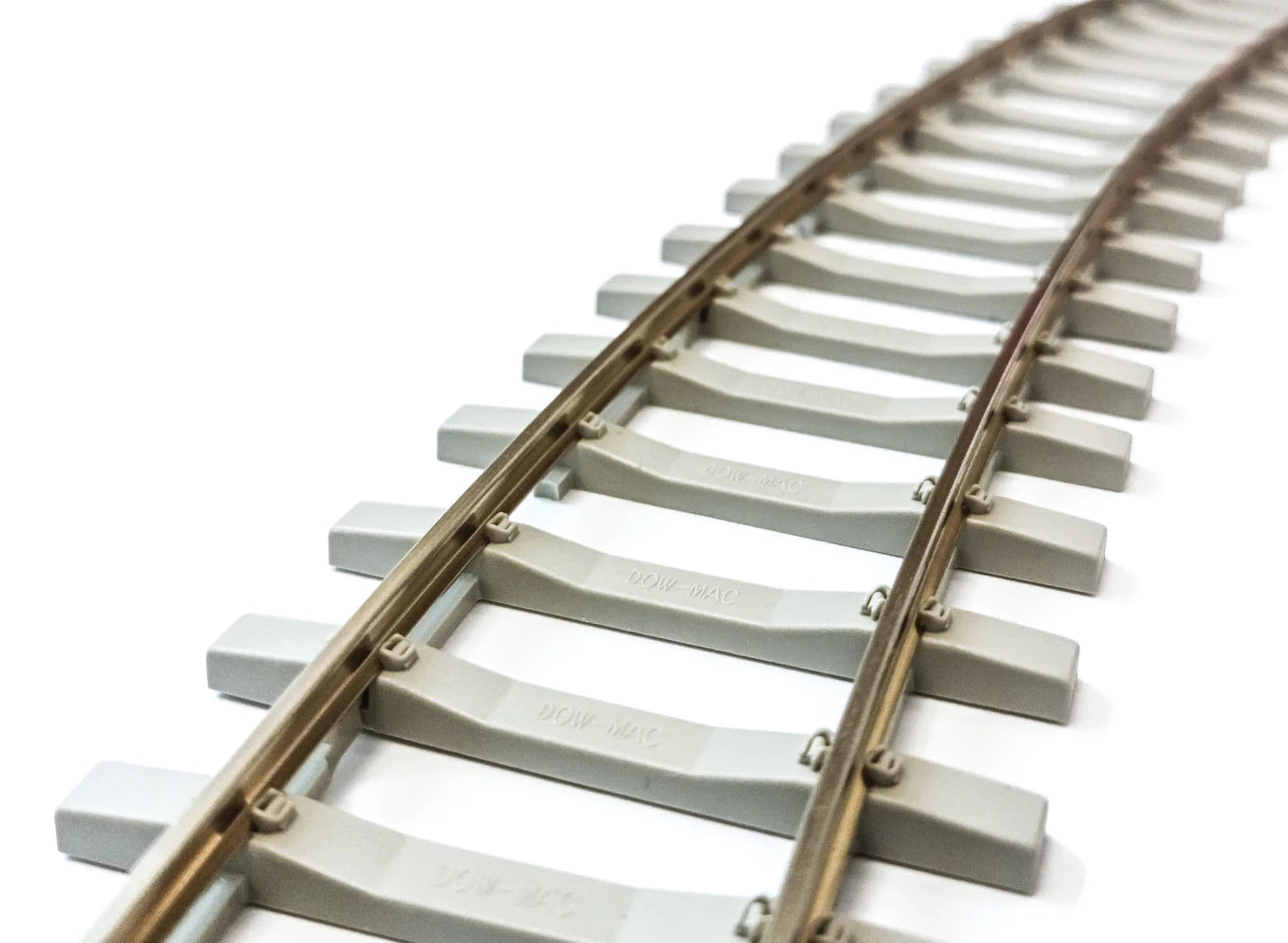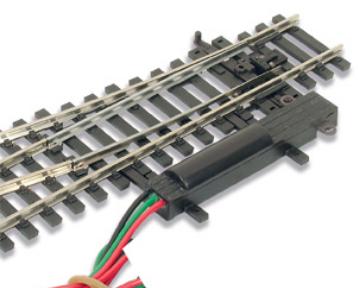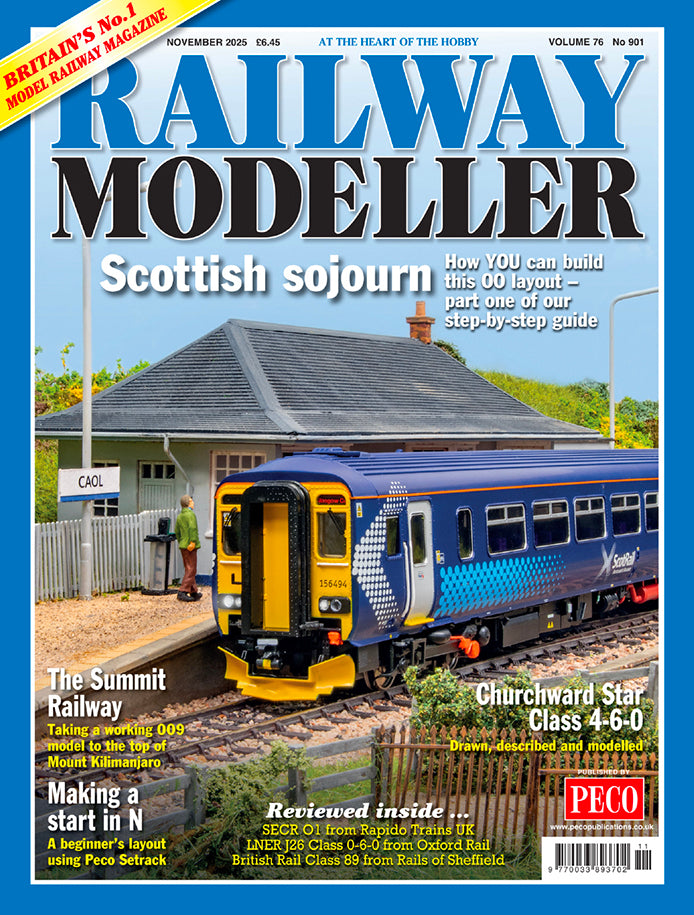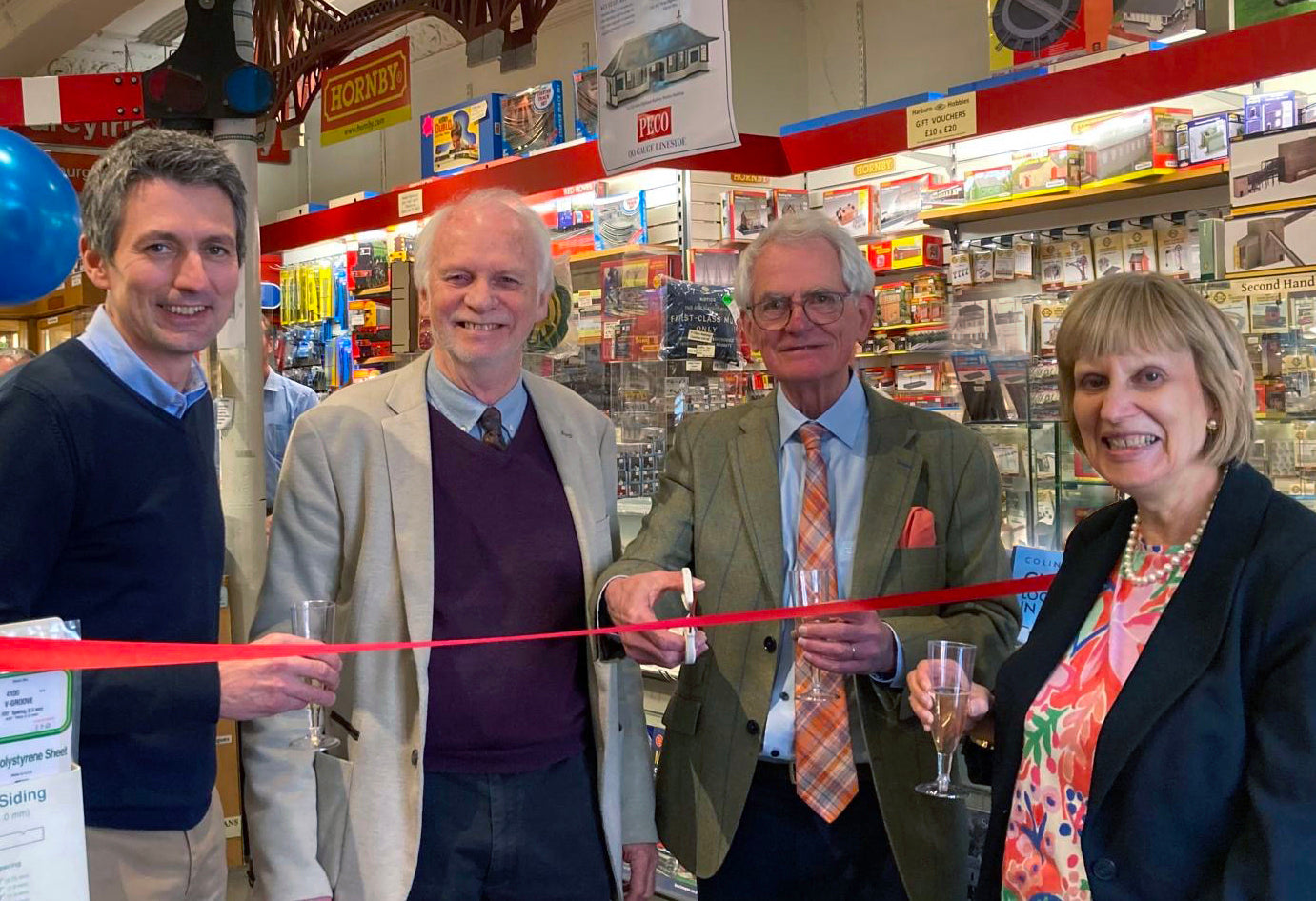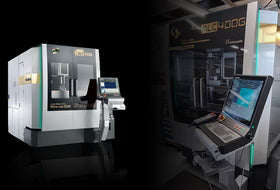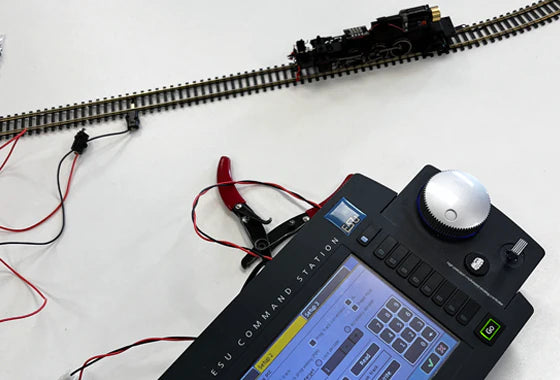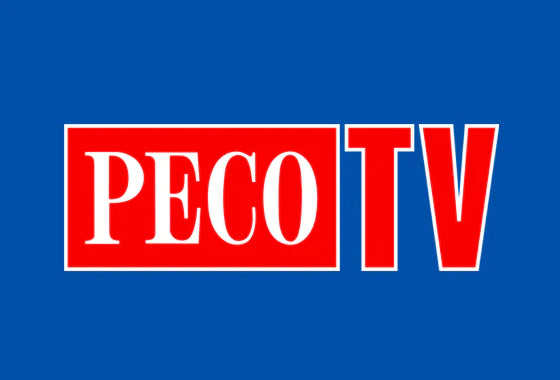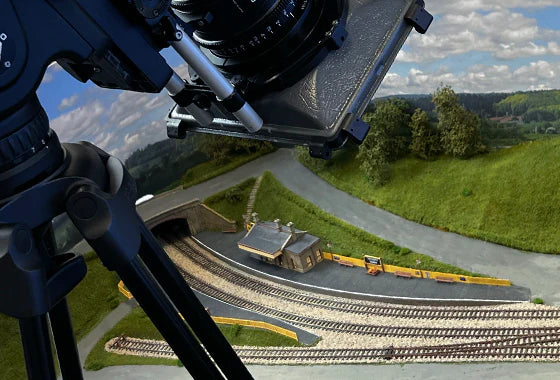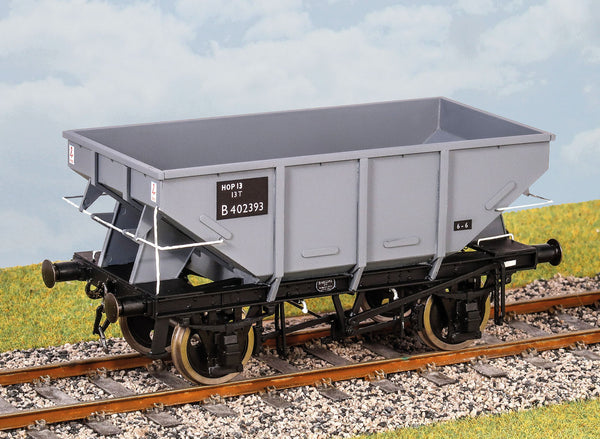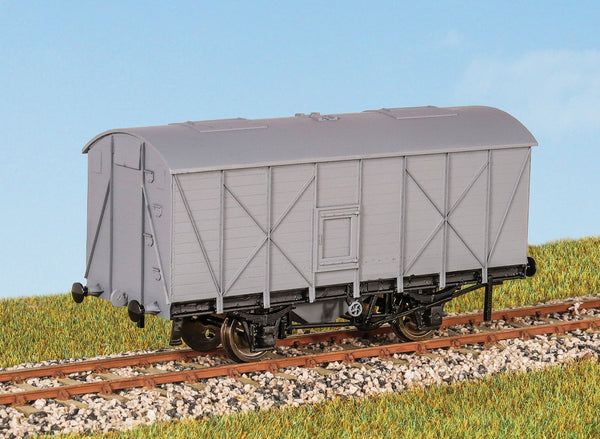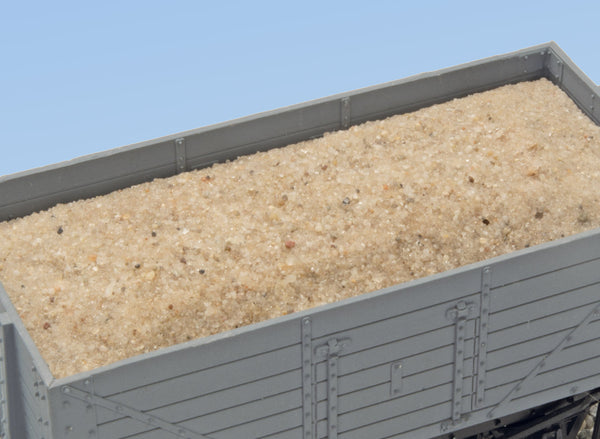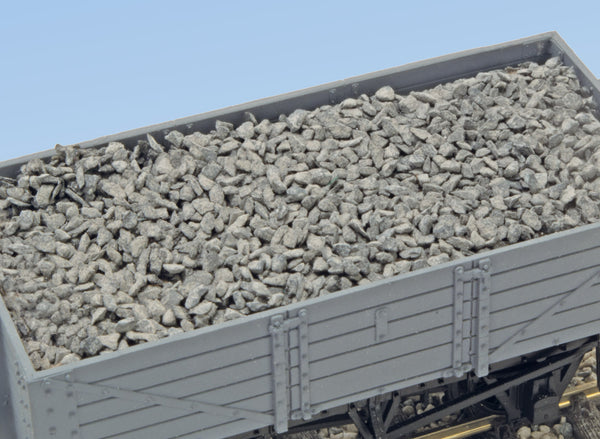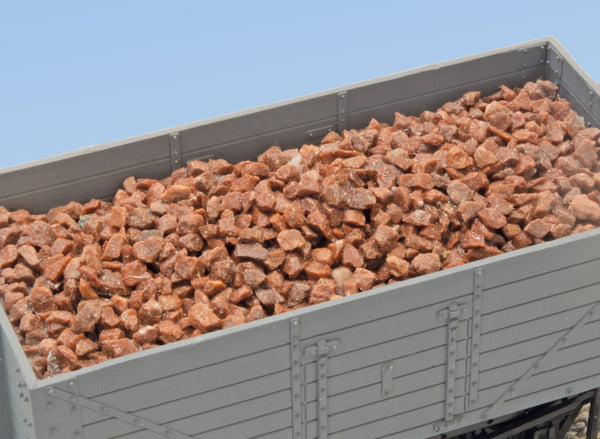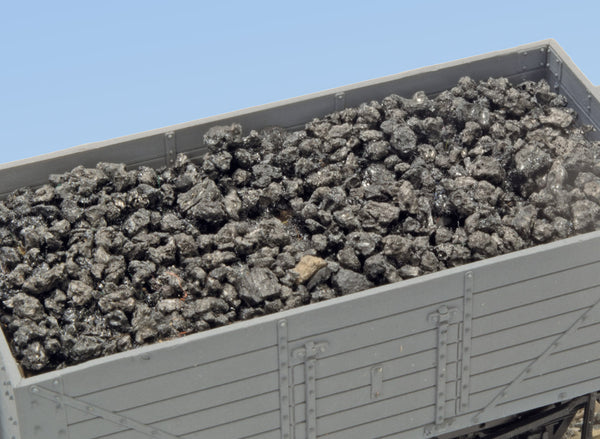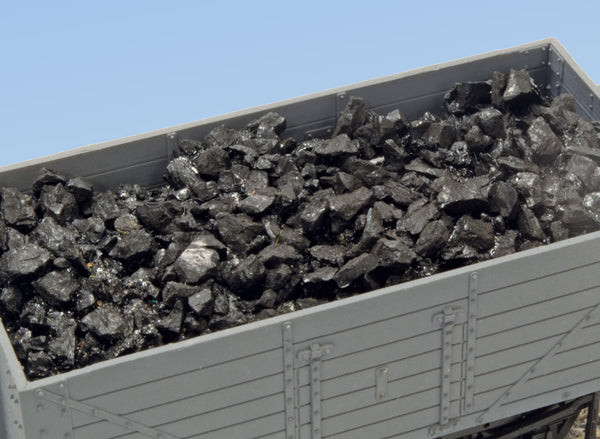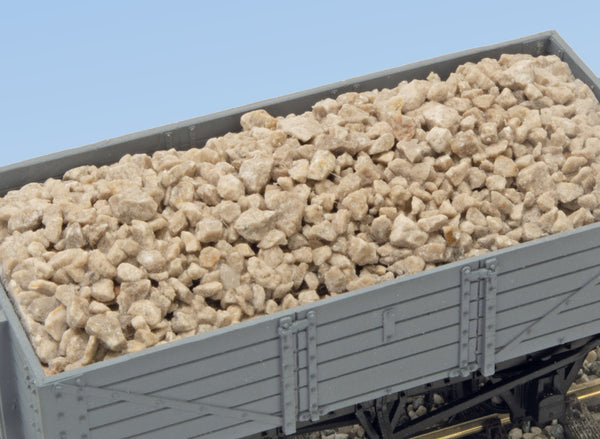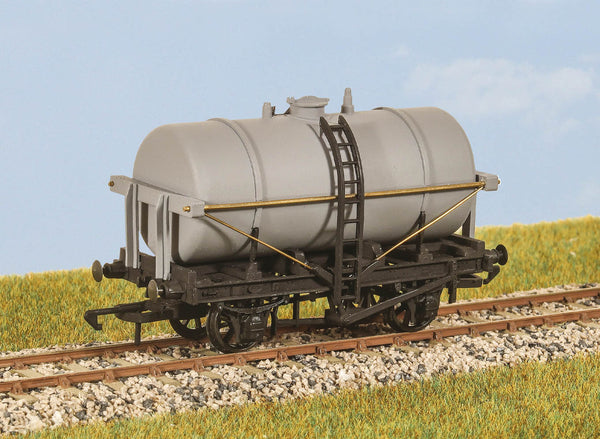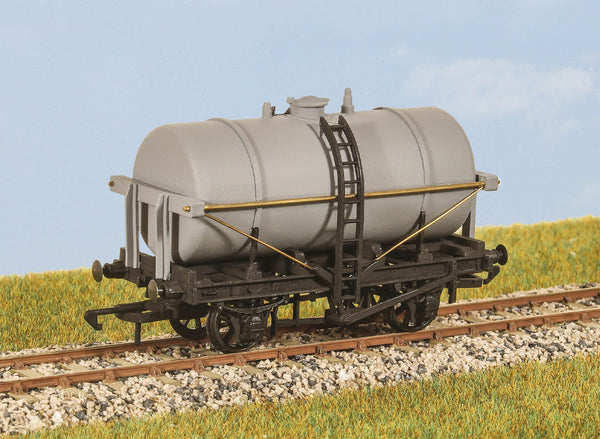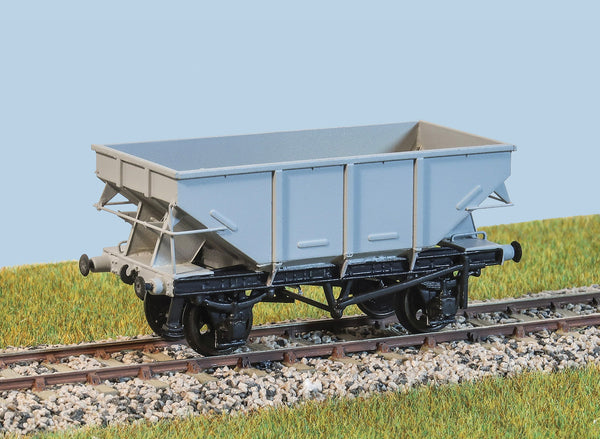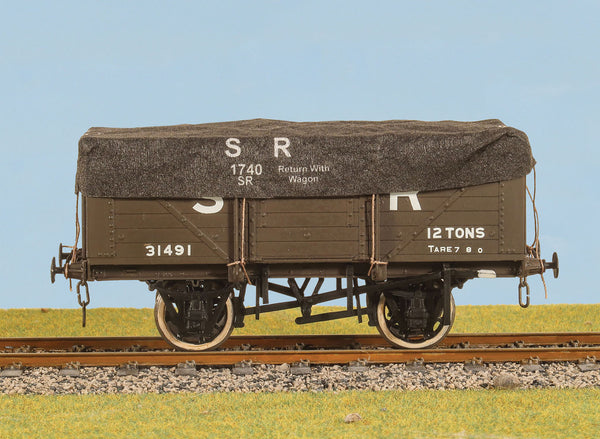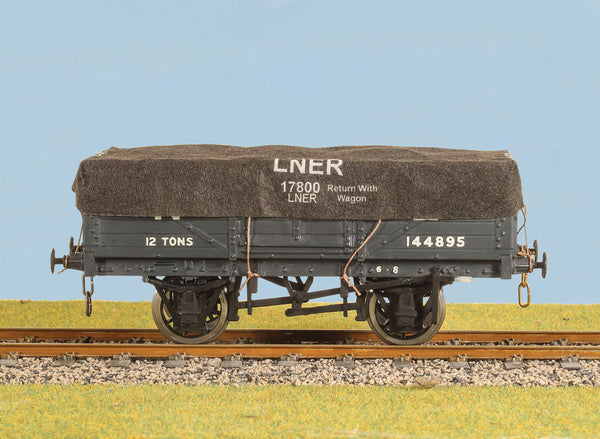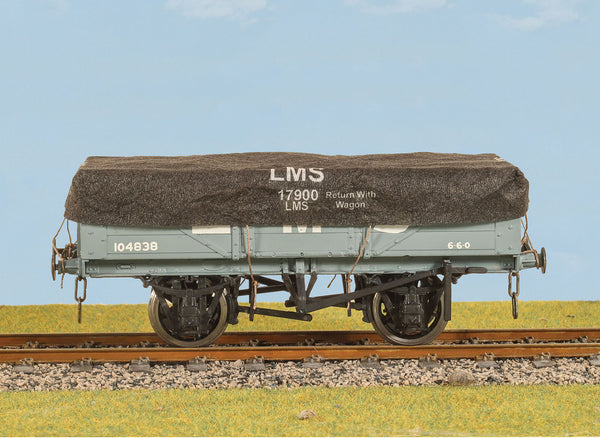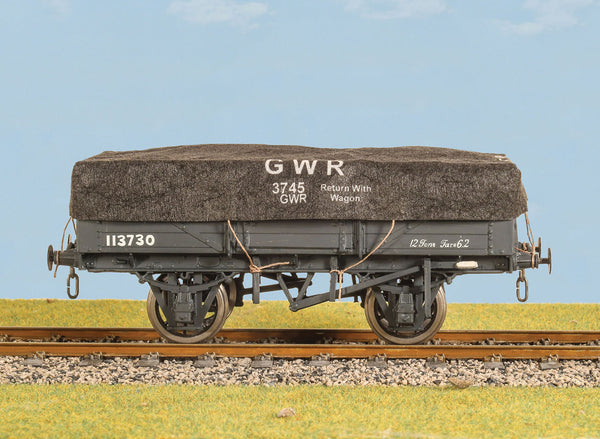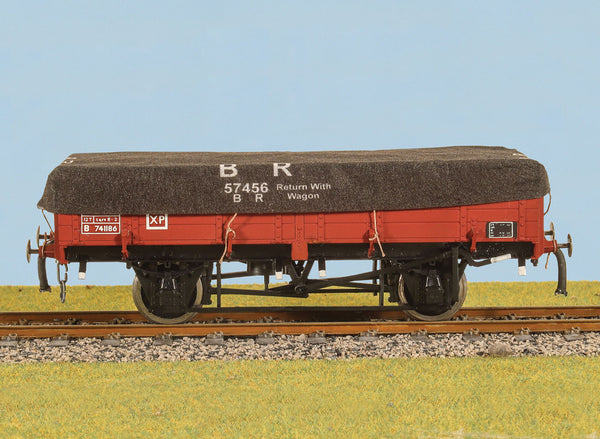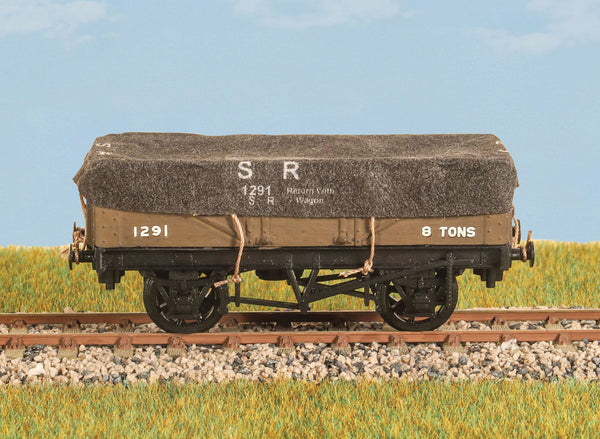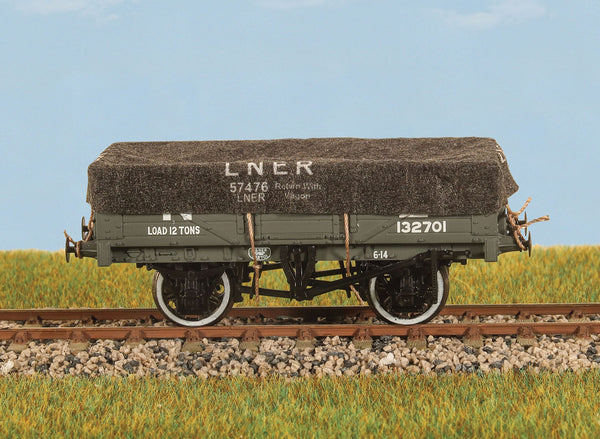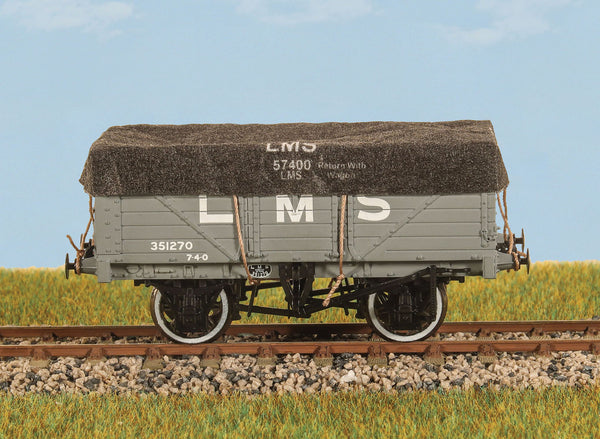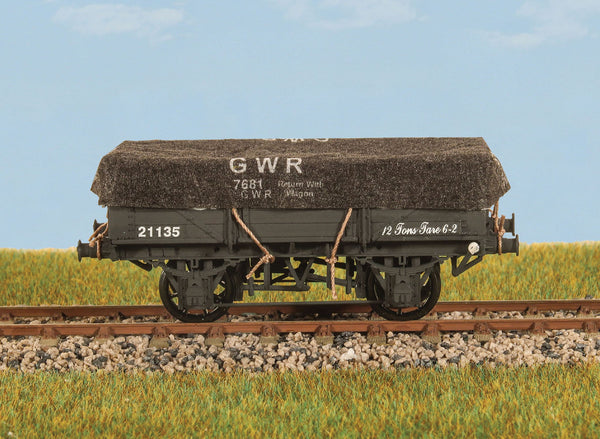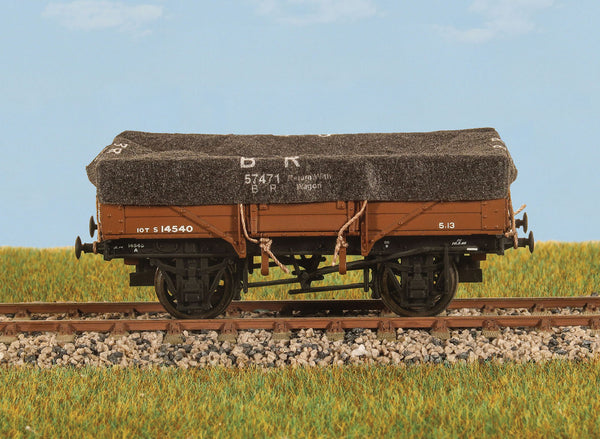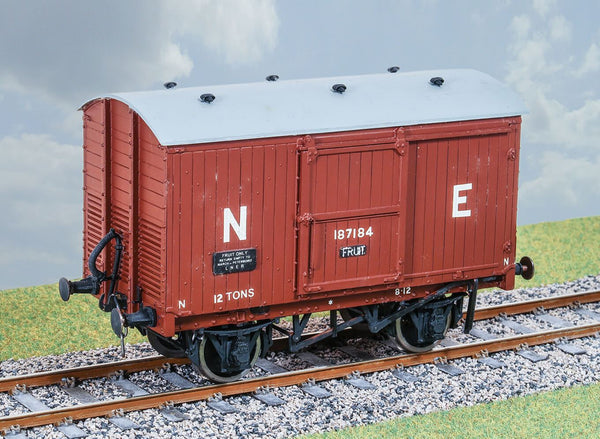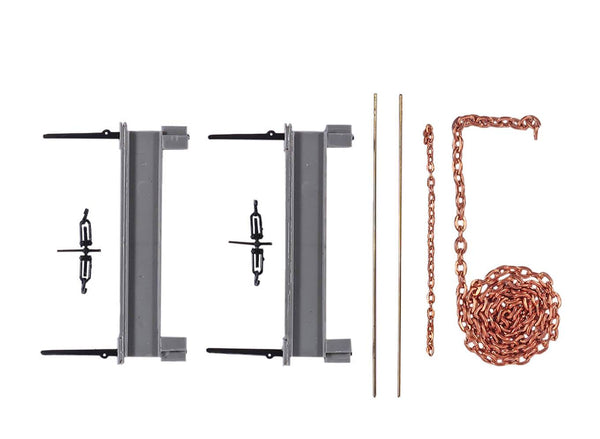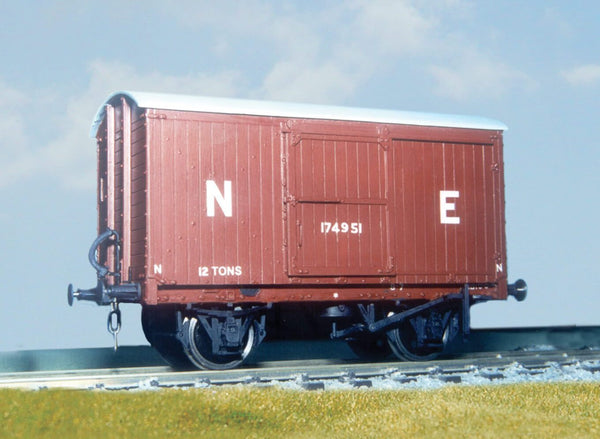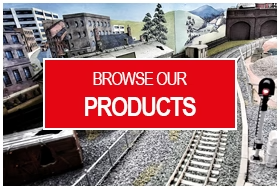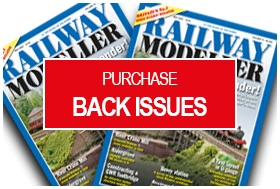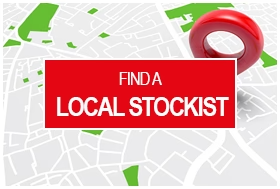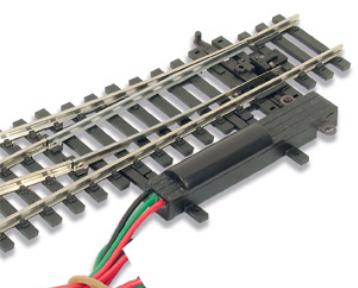BROWSE PECO PRODUCTS
Browse through our complete product portfolio.
268 Products Found
O Gauge BR-LNER Steel Hopper Wagon Kit
The British Railways LNER 13-ton steel hopper wagon was based on an LNER design but produced in the early British Railways era between 1949 and 1953. It marked a step forward from earlier wooden-bodied wagons by using an all-steel, welded construction, which offered improved durability and reduced maintenance needs. The design reflected the LNER’s long-standing experience with mineral wagons, but was adapted for post-war production methods in BR workshops such as those at Shildon, Faverdale, and York.
Over 2,600 of these wagons were built, and they became a common sight in the North Eastern Region. This was partly because many goods yards in the area had coal-drop staithes, making the bottom-discharge hopper design especially efficient for unloading bulk materials. While they were primarily intended for transporting coal, the hoppers proved versatile and were later used to carry stone, sand, and other aggregates.
The 13-ton steel hopper was a reliable and workmanlike vehicle that served across the UK for several decades. Its robust construction meant it could withstand heavy use, and it became a mainstay of freight traffic in the post-war period. Although newer wagon designs eventually replaced them, some examples remained in service into the early 1980s, making them one of the longer-lived mineral wagon types of the mid-20th century.
British Railways Bulk Grain Wagon Kit (LNER)
Around 100 of these vans were built by the LNER between 1921 and 1936 for the transportation of grain, initially from the Port of Hull. In time their use became more widespread, often finding work transporting barley from Lincolnshire to the maltings in Scotland. The remaining wagons were retired in the mid-1970s.
Our new kit really is all-new. Brand new tooling producing some very fine plastic mouldings. In addition to that the kit includes brass bearings, fine scale metal wheels and NEM pockets for the tension lock couplers included. A set of waterslide decals for both the LNER and BR periods are included. Assembly is really straight forward aided by the clear and helpful instructions. The resulting model is one that would make a fine addition to any layout, and from a retailer's point of view there is the added attraction of being able to sell multiple kits given that modellers would likely require a rake of these wagons!
Wagon Load Kit OO/HO - Sand
All kits comprise a bag of load material, such as coal or sand, plus sections of board that are cut to size to fit the desired wagon. The modeller, using a PVA adhesive, secures the materials on the cut boards and places the load inside the wagon for instant effect. The additional benefit, apart from the realism, is that some valuable weight is added to what might otherwise be a very light vehicle.
The OO/HO scale kits contain enough material for up to 3 wagons. Full instructions are provided in the packs.
Wagon Load Kit OO/HO - Granite
All kits comprise a bag of load material, such as coal or sand, plus sections of board that are cut to size to fit the desired wagon. The modeller, using a PVA adhesive, secures the materials on the cut boards and places the load inside the wagon for instant effect. The additional benefit, apart from the realism, is that some valuable weight is added to what might otherwise be a very light vehicle.
The OO/HO scale kits contain enough material for up to 3 wagons. Full instructions are provided in the packs.
Wagon Load Kit OO/HO - Iron Ore
All kits comprise a bag of load material, such as coal or sand, plus sections of board that are cut to size to fit the desired wagon. The modeller, using a PVA adhesive, secures the materials on the cut boards and places the load inside the wagon for instant effect. The additional benefit, apart from the realism, is that some valuable weight is added to what might otherwise be a very light vehicle.
The OO/HO scale kits contain enough material for up to 3 wagons. Full instructions are provided in the packs.
Wagon Load Kit OO/HO - Coke
All kits comprise a bag of load material, such as coal or sand, plus sections of board that are cut to size to fit the desired wagon. The modeller, using a PVA adhesive, secures the materials on the cut boards and places the load inside the wagon for instant effect. The additional benefit, apart from the realism, is that some valuable weight is added to what might otherwise be a very light vehicle.
The OO/HO scale kits contain enough material for up to 3 wagons. Full instructions are provided in the packs.
Wagon Load Kit OO/HO - Coal
All kits comprise a bag of load material, such as coal or sand, plus sections of board that are cut to size to fit the desired wagon. The modeller, using a PVA adhesive, secures the materials on the cut boards and places the load inside the wagon for instant effect. The additional benefit, apart from the realism, is that some valuable weight is added to what might otherwise be a very light vehicle.
The OO/HO scale kits contain enough material for up to 3 wagons. Full instructions are provided in the packs.
Wagon Load Kit OO/HO - Limestone
All kits comprise a bag of load material, such as coal or sand, plus sections of board that are cut to size to fit the desired wagon. The modeller, using a PVA adhesive, secures the materials on the cut boards and places the load inside the wagon for instant effect. The additional benefit, apart from the realism, is that some valuable weight is added to what might otherwise be a very light vehicle.
The OO/HO scale kits contain enough material for up to 3 wagons. Full instructions are provided in the packs.
Parkside OO - 4-Wheel Oil Tank Wagon Kit
These kits have been transferred over to Parkside from the PECO "Wonderful Wagons" range, a long-standing favourite kit of modellers for many years. Back then these kits were pre-coloured and decorated, but we have overhauled the kits, added an NEM pocket (so modellers can easily fit a coupler of their choice - although the kit is supplied with a set of tension-lock couplers) and now supply the kits with either a set of milk company decals (PC91) or oil company decals (PC92). The decals provide a whole lot more detail than previously applied to the original pre-decorated kits.
Parkside OO - 4-Wheel Milk Tank Wagon Kit
These kits have been transferred over to Parkside from the PECO "Wonderful Wagons" range, a long-standing favourite kit of modellers for many years. Back then these kits were pre-coloured and decorated, but we have overhauled the kits, added an NEM pocket (so modellers can easily fit a coupler of their choice - although the kit is supplied with a set of tension-lock couplers) and now supply the kits with either a set of milk company decals (PC91) or oil company decals (PC92). The decals provide a whole lot more detail than previously applied to the original pre-decorated kits.
British Railways 13 Ton Steel Body Hopper (LNER)
Over 2,600 of these wagons were built for use on British Railways, between 1949 and 1953. They became synonymous with the North East Region, where coal drop staithes were commonly provided in the station goods yard, so a bottom-discharge hopper was the obvious type to use. Although intended for transporting coal, in later life they became more nomadic around the UK and were used for carrying other materials such as stone and sand. The last examples lingered in service until the early 1980s.
SR Wagon Tarpaulin
O Scale SR wagon tarpaulin, produced from a material that convincingly replicates the texture and look of canvas tarpaulins once commonly used on open wagons, to protect the contents underneath. Each product contains 3 tarpaulins.
LNER Wagon Tarpaulin
O Scale LNER wagon tarpaulin, produced from a material that convincingly replicates the texture and look of canvas tarpaulins once commonly used on open wagons, to protect the contents underneath. Each product contains 3 tarpaulins.
LMS Wagon Tarpaulin
O Scale LMS wagon tarpaulin, produced from a material that convincingly replicates the texture and look of canvas tarpaulins once commonly used on open wagons, to protect the contents underneath. Each product contains 3 tarpaulins.
GWR Wagon Tarpaulin
O Scale GWR wagon tarpaulin, produced from a material that convincingly replicates the texture and look of canvas tarpaulins once commonly used on open wagons, to protect the contents underneath. Each product contains 3 tarpaulins.
BR Wagon Tarpaulin
O Scale BR wagon tarpaulin, produced from a material that convincingly replicates the texture and look of canvas tarpaulins once commonly used on open wagons, to protect the contents underneath. Each product contains 3 tarpaulins.
SR Wagon Tarpaulin
LNER Wagon Tarpaulin
LMS Wagon Tarpaulin
GWR Wagon Tarpaulin
BR Wagon Tarpaulin
LNER 12ton Fruit Van
500 of these vans were built in the 1930s, for the substantial LNER fruit traffic, originating mainly from East Anglia, as well as Harwich, Hull and Leith. They might have also been used for general traffic outside of the growing season, and lasted into the 1960s. Transfers for LNER and BR. These finely moulded plastic wagon kits come complete with pin point axle wheels and bearings, 3 link couplings and transfers. This kit is supplied with pre-coloured moulded parts although painting can improve the appearance. Additional parts to enable the vehicle to be modelled incorporating modifications made to the prototypes during their working life are included where appropriate.
LNER 12ton Goods Van
2,167 of these vans were built in the 1930s for general goods traffic. They retained a wooden chassis, unusual for a 10-foot wheelbase chassis. After 1937 they were used throughout Britain. Substantially built they lasted into the 1960s. Transfers for LNER and BR. These finely moulded plastic wagon kits come complete with pin point axle wheels and bearings, 3 link couplings and transfers. This kit is supplied with pre-coloured moulded parts although painting can improve the appearance. Additional parts to enable the vehicle to be modelled incorporating modifications made to the prototypes during their working life are included where appropriate.
